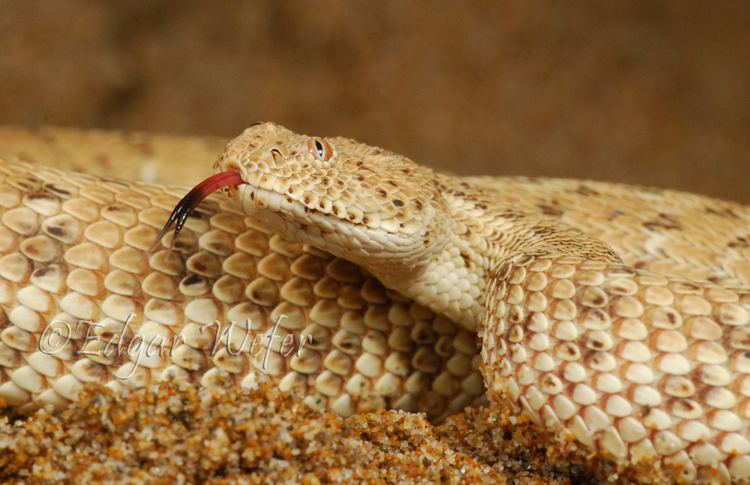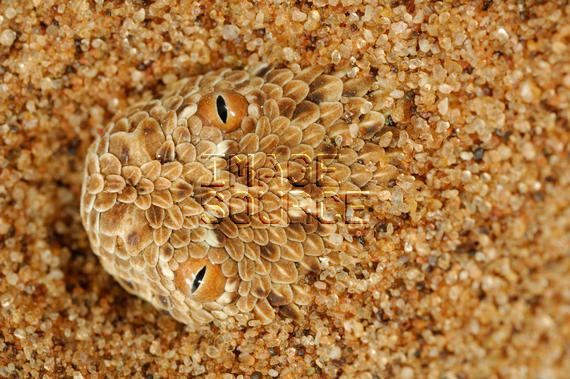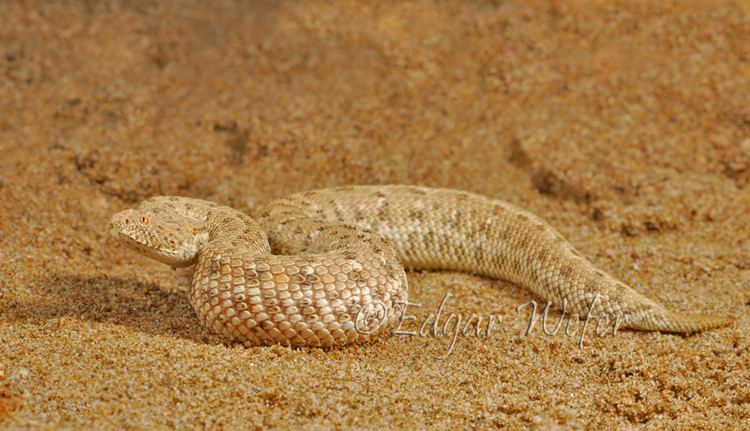Subphylum Vertebrata Suborder Serpentes Rank Species | Phylum Chordata Family Viperidae Higher classification Bitis | |
 | ||
Similar Snake, Bitis, Reptile, Vipers, Bitis caudalis | ||
Bitis peringueyi mating behaviour
Bitis peringueyi is a venomous viper species found in Namibia and southern Angola. No subspecies are currently recognized.
Contents
- Bitis peringueyi mating behaviour
- Bitis peringueyi the sidewinding adder
- Description
- Common names
- Etymology
- Geographic range
- Behavior
- Feeding
- References
Bitis peringueyi the sidewinding adder
Description

B. peringueyi is a small snake with an average total length (body + tail) of 20–25 cm (8–10 in), its maximum recorded total length is 32 cm (13 in).

The head is short and flat with eyes located on top of the head. The head is covered with strongly keeled scales, the smallest of which are located anteriorly. The eyes are separated by six to 9 scales, while each eye is surrounded by 10-13 scales. Two to four scales separate the suborbitals from the supralabials. The latter number 10-14, the sublabials 10-13. The one pair of chin shields contact the first two to four sublabials.

The dorsal scales number 23-31 at midbody and 21-27 anteriorly. All are strongly keeled, except those bordering the ventral scales are large and smooth. The ventrals number 117-144. The 15-30 subcaudals are usually keeled, particularly towards the tip. The anal plate is single.

The color pattern consists of a pale buff, chestnut brown to orange-brown, or sandy-grayish ground color, overlaid with three longitudinal series of faint, elongate, gray to dark spots. The body is also stippled with an irregular pattern of pale and dark spots. The belly is usually whitish or dirty yellow. The tail is generally tan, but in 25% of specimens, it is black.
Common names
Common names of this snake include Peringuey's adder, Peringuey's desert adder, sidewinding adder, Namib dwarf sand adder, dwarf puff adder, Namib desert sidewinding adder, dwarf sand adder, Namib dwarf adder, and Namib desert viper.
Etymology
This adder was named after Louis Péringuey, the South African entomologist and museum director.
Geographic range
It is found in the Namib Desert from southern Angola to Lüderitz, Namibia. Also seen in the Fish River Canyon.
The type locality is given as "Damaraland, 10 miles east of Walfisch Bay" [Namibia].
Behavior
An ambush hunter, it buries itself just beneath the surface of the sand with only its eyes and the tip of its tail exposed (individuals with black tail-tips employ caudal luring). When prey happens by, it is seized and envenomated.
Feeding
Its diet includes the lizards Aporosaura and Meroles, and the barking gecko Ptenopus. Aporosaura lizards have high water contents and are important sources of water for these snakes.
